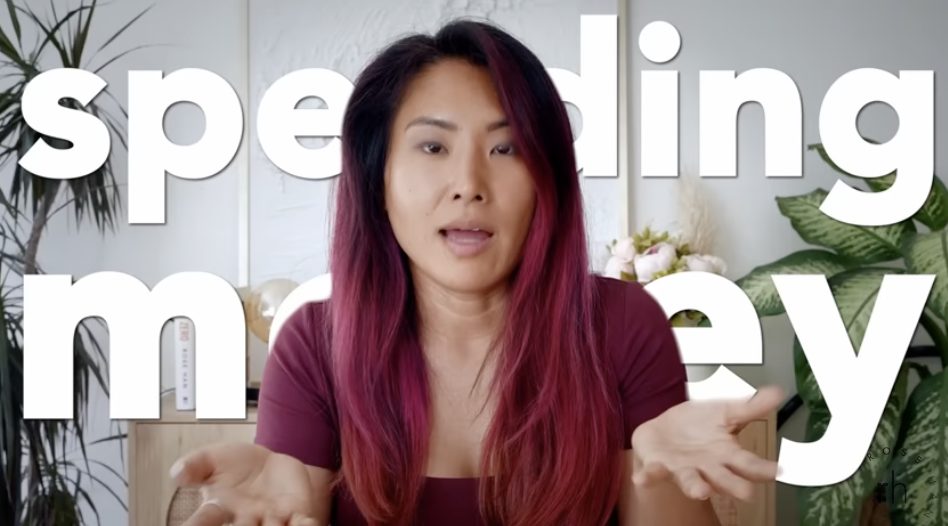The Psychology Behind Overspending
We’re wired to seek pleasure and avoid pain. Shopping provides an immediate dopamine hit that feels good in the moment but leaves us wanting more. She discovered that by finding alternative sources of joy and fulfillment, she could break the cycle of emotional spending.
One of my most effective strategies has been dedicating 15 minutes daily to activities that genuinely make me happy—meditation, dancing, reading fiction, or calling a friend. These free alternatives provide more lasting satisfaction than any purchase ever could.
Journaling has also been transformative. In our overstimulated world, connecting with your inner voice helps clarify what truly matters to you. The more connected you are to yourself, the more intentional your spending becomes.
Smart Luxury: Enjoying More While Spending Less
Saving money doesn’t mean living a joyless existence. Rose flew to Bali in business class last year—a $6,000 value—using credit card rewards from everyday spending she would have done anyway. The key is concentrating necessary expenses on cards with valuable rewards programs.
For fashion lovers like me, clothing rental services provide the excitement of new outfits without the permanent cost. She gets regular dopamine hits from variety while keeping my closet (and spending) under control.
When she does make purchases, she has learned to check secondhand marketplaces first. She furnished my entire LA beachside apartment for under $3,000 instead of the $10,000+ it would have cost new. My West Elm sofa? $1,000 instead of $2,500. Those pink Crate and Barrel chairs? $30 each instead of $200+.
Building Habits That Make Saving Effortless
The most powerful changes come from small, consistent habits. Here are some that have made the biggest difference for Rose:
-
Monthly money dates: She blocks 1-2 hours each month to review spending, plan her budget, and tell her money what she wants it to do—not what Amazon wants.
-
Creating purchase friction: She deleted saved payment information and shopping apps from her phone. That extra step of manually entering card details gives her time to reconsider impulse buys.
-
Following “one in, one out”: Before buying something new, she removes something similar. This keeps her life uncluttered and prevents unnecessary accumulation.
-
Learning basic DIY skills: Doing her own nails saves her $1,500 annually compared to salon visits—plus the time spent traveling and waiting.
-
Developing a meal prep routine: With dinner and drinks now costing around $100 per person, learning just one new recipe each month has dramatically reduced her food spending.
Perhaps most importantly, she has replaced mindless social media scrolling with hobbies she genuinely enjoys. When she started taking dance classes again, she found herself with less time to compare her life to influencers’ perfectly curated feeds—and less desire to spend money trying to replicate their lifestyle.
The Surprising Power of Social Capital
We don’t talk enough about how social connections can be as valuable as financial ones. When her friend Bridget was moving, she gave her plants, a standing desk, and a mirror she would have otherwise thrown away—items that would have cost her at least $1,000.
Having friends who can give her a ride to the airport or help her move saves money. But more importantly, these relationships provide the connection and support we’re often trying to buy through retail therapy.
She’s not going to hate her way to better finances. She has to love her way there.
This mindset shift has been the most powerful change of all. When she stopped seeing saving money as deprivation and started viewing it as self-care, everything transformed. Creating space in her schedule, investing in her health, and connecting with what truly makes her happy has naturally led to spending less without feeling like she’s sacrificing anything.
The results speak for themselves. She’s saving thousands without trying, living in a beautiful space she loves, and feeling more fulfilled than she ever did during her shopping-as-therapy days. Best of all, she’s discovered that the things that bring lasting happiness rarely come with a price tag.
Frequently Asked Questions
Q: How can I identify if I’m spending money for emotional reasons?
Pay attention to when and why you shop. If you notice patterns of shopping when you’re stressed, bored, or seeking validation, you might be using spending as an emotional crutch. Try tracking your mood before purchases for a few weeks to spot these connections.
Q: Won’t cutting back on spending make me feel deprived?
Not if you approach it from a place of self-awareness rather than restriction. The key is finding free or lower-cost alternatives that provide the same emotional benefits as shopping. When you focus on what you’re gaining (financial freedom, less clutter, more intentional choices) rather than what you’re giving up, saving feels empowering instead of limiting.
Q: How do I start a monthly money date if I’ve never budgeted before?
Begin simply by reviewing where your money went last month. Don’t judge yourself—just observe the patterns. Then decide on 2-3 categories where you’d like to spend less next month. Make the experience pleasant by adding music, snacks, or whatever helps you look forward to this time. Consistency matters more than perfection.
Q: Is it really worth my time to shop secondhand?
For big-ticket items, absolutely. The time investment makes sense when you’re saving 50-90% off retail prices. Be selective—focus on furniture, electronics, and quality clothing where the savings justify the effort. For smaller everyday items, the convenience of buying new might outweigh the potential savings.
Q: How do I negotiate prices without feeling uncomfortable?
Start with a simple phrase like “Is that the best you can do?” or “Do you have any current promotions I could apply?” Practice makes this easier. Remember that negotiating is expected in many situations, and the worst outcome is simply hearing “no.” Many service providers (cable, internet, phone) have retention departments specifically authorized to offer discounts if you indicate you’re considering canceling.







